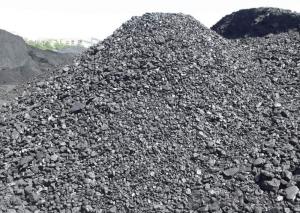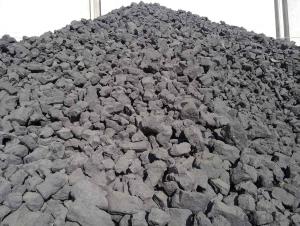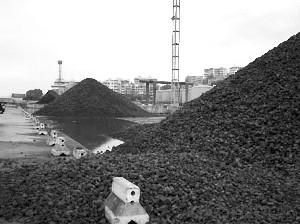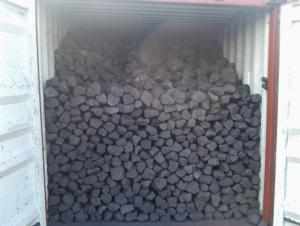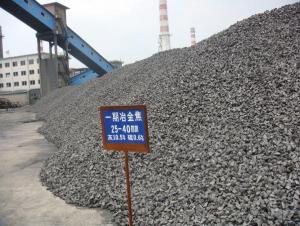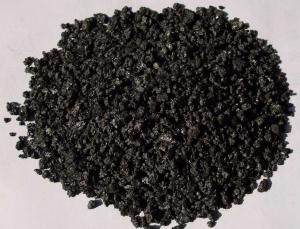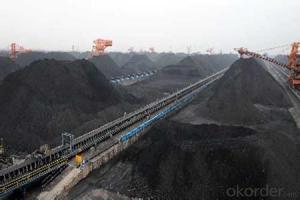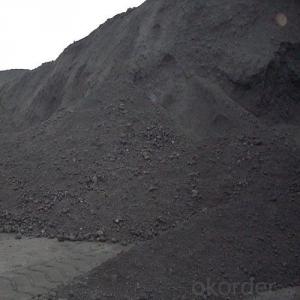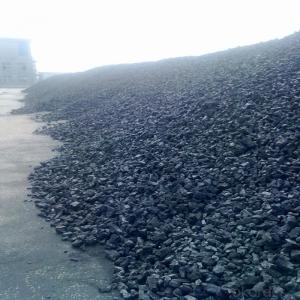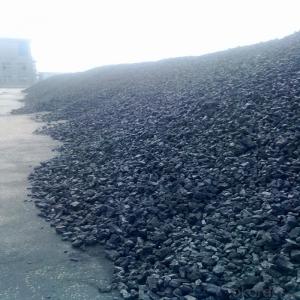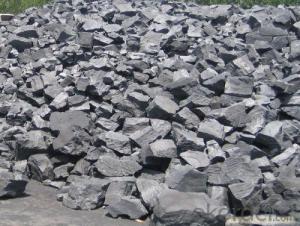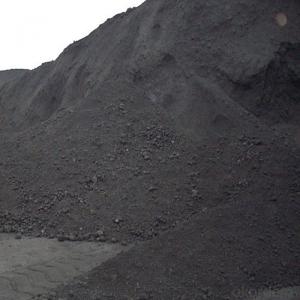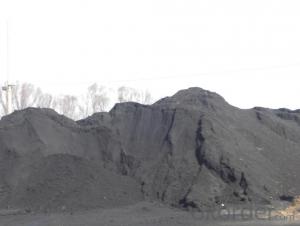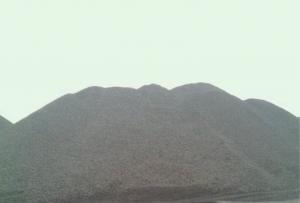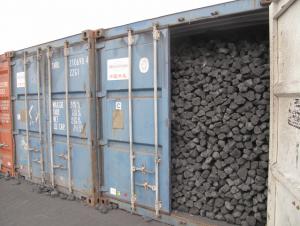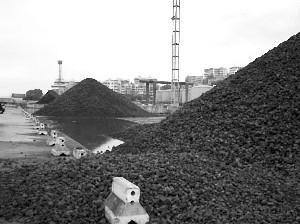Metallurgical Coke of Coke Strength after Reactivity 64
- Loading Port:
- Tianjin
- Payment Terms:
- TT OR LC
- Min Order Qty:
- 100 m.t.
- Supply Capability:
- 3000 m.t./month
OKorder Service Pledge
OKorder Financial Service
You Might Also Like
1. Structure of Metallurgical Coke of Coke Strength after Reactivity 64 Description:
Coke is made by high temperature metallurgical coke for blast furnace smelting, casting and gasification. Occurring in the process of coking after recovery and purification of coke oven gas is a high calorific value of fuel, is an important industrial raw material in organic synthesis.
Coke is mainly used for blast furnace ironmaking and used for copper, lead, zinc, titanium, antimony, mercury and other non-ferrous metal smelting of blast furnace, reducing agent, compound and the function of stock column frame.
Blast furnace with Coke instead of charcoal, which laid a foundation for the large-scale of modern blast furnace, is a major milestone in the history of metallurgy.
2. Main Features of the Metallurgical Coke of Coke Strength after Reactivity 64:
• Quality assurance
• Mutual benefit
• Preferential price
• Various choice
3. Metallurgical Coke of Coke Strength after Reactivity 64 Images:
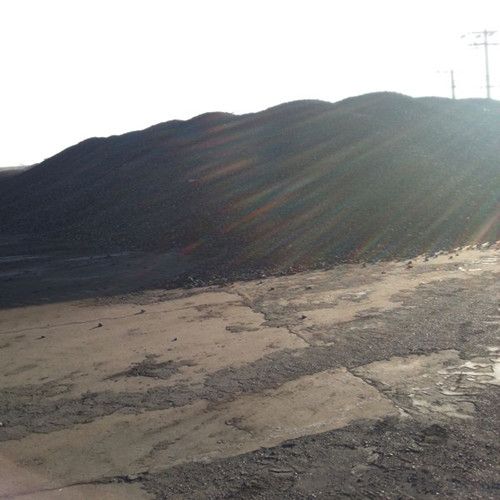
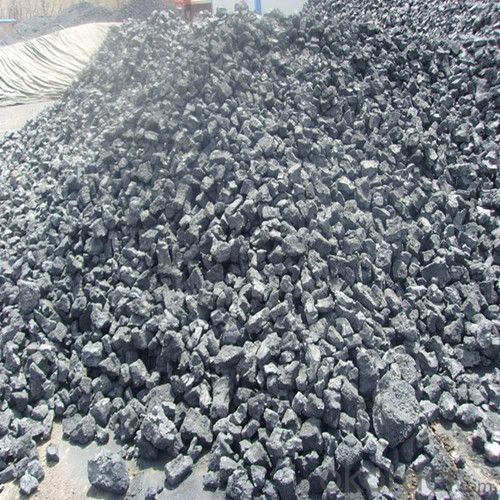
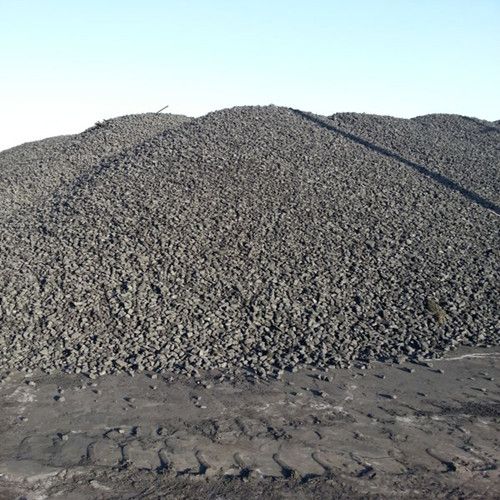
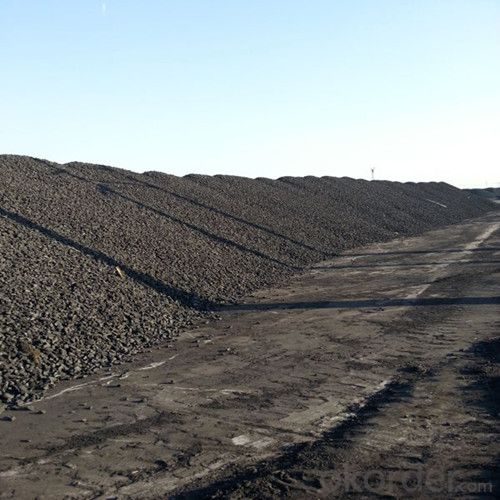
4. Metallurgical Coke of Coke Strength after Reactivity 64 Specification:
Parameters | Guarantee | Rejection |
Total Moisture (As received basis) | 5% max | |
Ash (dry basis) | 12.5% max | > 13.5% |
Volatile Matter (dry basis) | 1.5% max | > 1.8% |
Sulphur (dry basis) | 0.65% max | > 0.75% |
Phosphorus (dry basis) | 0.035% max | > 0.045% |
M10 | 7% max | > 9% |
M40 | 84% min | <82% |
CSR | 64% min | <62% |
CRI | 26% max | > 28% |
Size 30-90 mm | 90% min | |
+90 mm | 5% max | > 8% |
-30mm | 5% max | > 8% |
5. FAQ
We have organized several common questions for our clients,may help you sincerely:
1) How to guarantee the quality of the products?
We have established the international advanced quality management system,every link from raw material to final product we have strict quality test;We resolutely put an end to unqualified products flowing into the market. At the same time, we will provide necessary follow-up service assurance.
2) What are coke's main physical properties?
The average heat capacity is 0.808 kj/(KGK) (100 ℃), 1.465 kj/(KGK) (1000 ℃)
Thermal conductivity is 2.64 kj/(MHK) (room temperature), 6.91 kj/(MHK) (900 ℃);
Ignition temperature (air) is 450-650 ℃.
3) How about your company?
Our company began to export coke when China cancelled 40% of coke export tariffs and quotas on January 1, 2013. We export many kinds of coke, such as CSR60 % and CSR 62% metallurgical coke (met coke), the NUT coke of 20 to 50 mm, coke breeze of 3 to 6 mm, and so on.
- Q: Types of coke and use of coke
- The vertical furnace processing of low metamorphic coal production of calcium carbide, ferroalloy, coke, chemical fertilizer production and ultra high power electrode, aerospace and medical high technology and high value-added products such as carbon needle coke the world's most complete and unique characteristics of the Chinese coking industrial system.
- Q: Coking coal, coke, coal, steam coal what is the difference?
- Coke is used for blast furnace ironmaking and iron ore in the steel furnace to play the role of the heating skeleton to support reducing agent
- Q: Coke is divided into several kinds of specifications ah
- (Lord Jiao Meilian) {for precision casting and ductile casting for} fixed carbon above 86; sulfur ash is below 0.5; 12; 1.5: volatile fiddle coke grain size 4cm--8cm or above 10cm: fixed carbon furnace for {}} setting common casting coke particle size 25cm:{for precision casting and ductile casting for 3 more than 88 tons of sulfur ash; 0.5; 10; 1.5: volatile foundry coke particle size 25cm:{type applicable to the above all high precision ductile casting export and international index: {8cm} fiddle coke for common casting and casting products such as strict fire pump fittings; fasteners such as high fixed carbon above 788385} sulfur: {for copper, aluminum, plastic, chemical coke} fixed carbon above 83 gas coal coke: {for carbon monoxide gas extraction, rich gas} fixed carbon about 78 coal coke: {casting parts annealing, Coke, coke, civilian chemical copper, aluminum, plastic} fixed carbon about 65 coke, coke coal: {civil casting parts of annealing, chemical coke}
- Q: Coke boiler belongs to coal-fired boiler
- In addition, the utility model is characterized in that the utility model is used for heating and catering industry. Generally speaking, coke boiler belongs to coal fired boiler. Reason is that coke is a coal and fat coal for coke production.
- Q: Coke indicators are divided into grades
- The index of pore structure is mainly expressed by the porosity rate (the percentage of the total volume of coke), which affects the reactivity and strength of coke. Different uses of different coke porosity index requirements, the general requirements of metallurgical coke porosity in the 40 ~ 45%, 35 ~ 40% in coke, coke export demand in about 30%. Coke crack degree and the porosity level, and the coking coal has a direct relationship, such as coal based coke refining, crack, high porosity, low strength; with coal as the foundation of the coal refining coke crack less, low porosity and high strength
- Q: How to distinguish the level of coke. What is metallurgical coke
- Coke type: coke is usually divided by use of metallurgical coke (including blast furnace coke, coke and iron alloy coke etc.), coke and calcium carbide with coke gasification
- Q: With the number of 1 tons of steel smelting coke
- Landlord is a layman. First of all, correct your mistake, steel is not used coke, coke is used to iron. You can change the question, how much Coke refining 1 tons of iron
- Q: I don't understand. With coke, then the rest of the coke, they are selling it?
- If most of the solid fuel is burning coal, but coking coal, which is very strong viscosity of coal is not good, it is very interesting to use the individual plant with it, the purpose is to change the fuel characteristics.Coking coal and coke, commonly used in metallurgical industry.Coal will be heated to a process of coke, but you really want to get coke, to specialized production. Power plants do not produce coke, they only have gray coke
- Q: What is the use of coke
- From the distribution of coke production in China, the distribution of coking enterprises in China is unbalanced, which is mainly distributed in North China, East China and northeast china. Three, the use of coke coke is mainly used in blast furnace ironmaking and copper, lead, zinc, titanium, antimony, mercury and other non-ferrous metal smelting furnace, reducing agent, heating agent and the role of the material column skeleton. The use of coke instead of charcoal in the blast furnace has laid the foundation for the large-scale development of modern blast furnaces and is a major milestone in the history of metallurgy. In order to achieve better technical and economic indexes of blast furnace operation, the coke (metallurgical coke) must have proper chemical and physical properties. In addition to a large number of coke used in iron smelting and non-ferrous metal smelting (metallurgical coke), but also for casting, chemical, calcium carbide and iron alloy, the quality requirements are different. Such as foundry coke, generally require large size, low porosity, high fixed carbon and low sulfur; chemical gasification, strict requirements for strength, but requires good response, high ash melting point; calcium carbide and coke production requirements to improve the fixed carbon content.
- Q: What's the difference between coke and coke?
- Higher than 550 DEG C, semi coke continues to decompose, precipitation of the remaining volatiles (the main component is hydrogen), semi coke weight loss at the same time contraction, the formation of cracks; temperature above the temperature of 800 degrees, the volume of semi coke hardens to form porous coke!
Send your message to us
Metallurgical Coke of Coke Strength after Reactivity 64
- Loading Port:
- Tianjin
- Payment Terms:
- TT OR LC
- Min Order Qty:
- 100 m.t.
- Supply Capability:
- 3000 m.t./month
OKorder Service Pledge
OKorder Financial Service
Similar products
Hot products
Hot Searches

